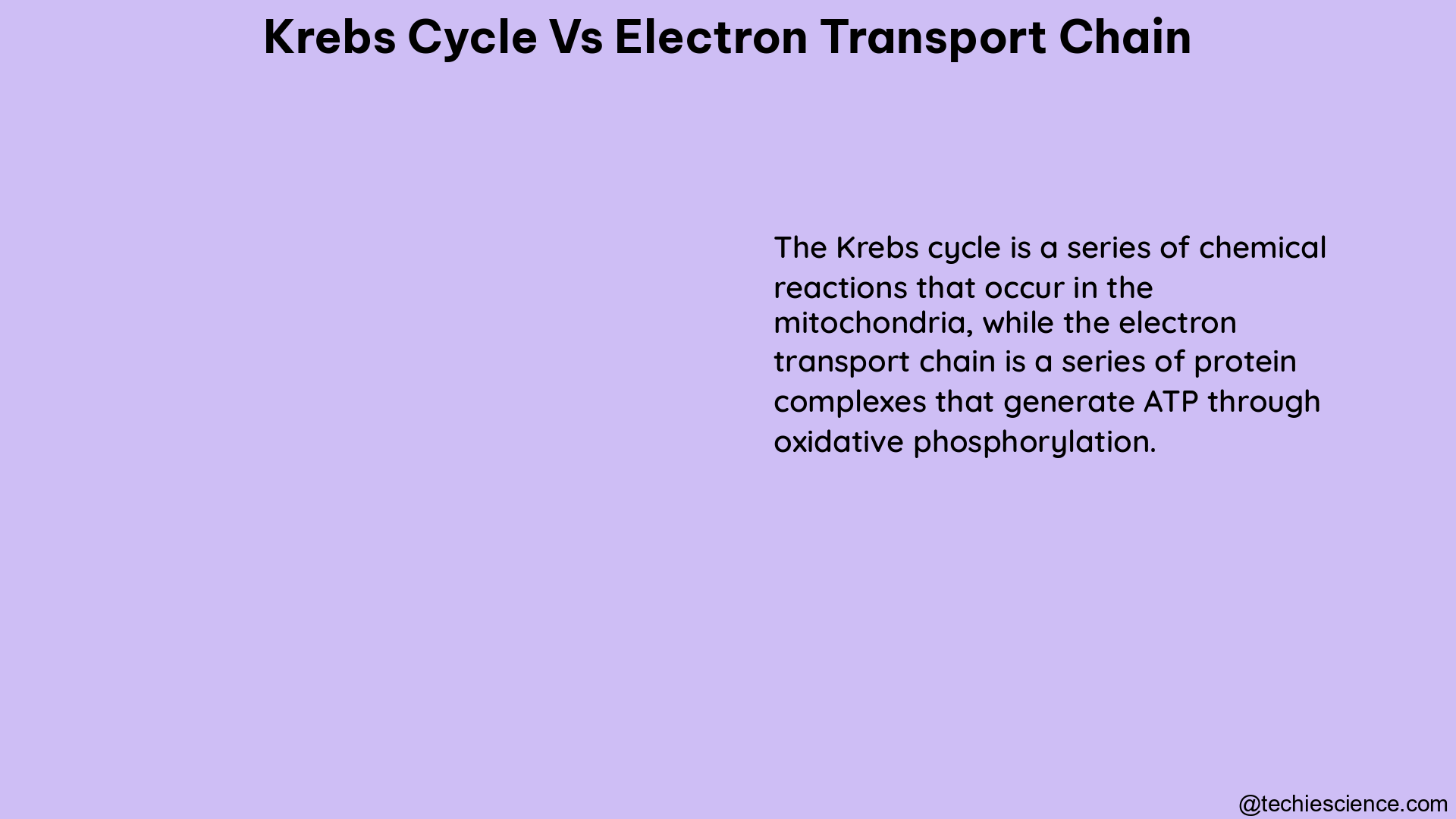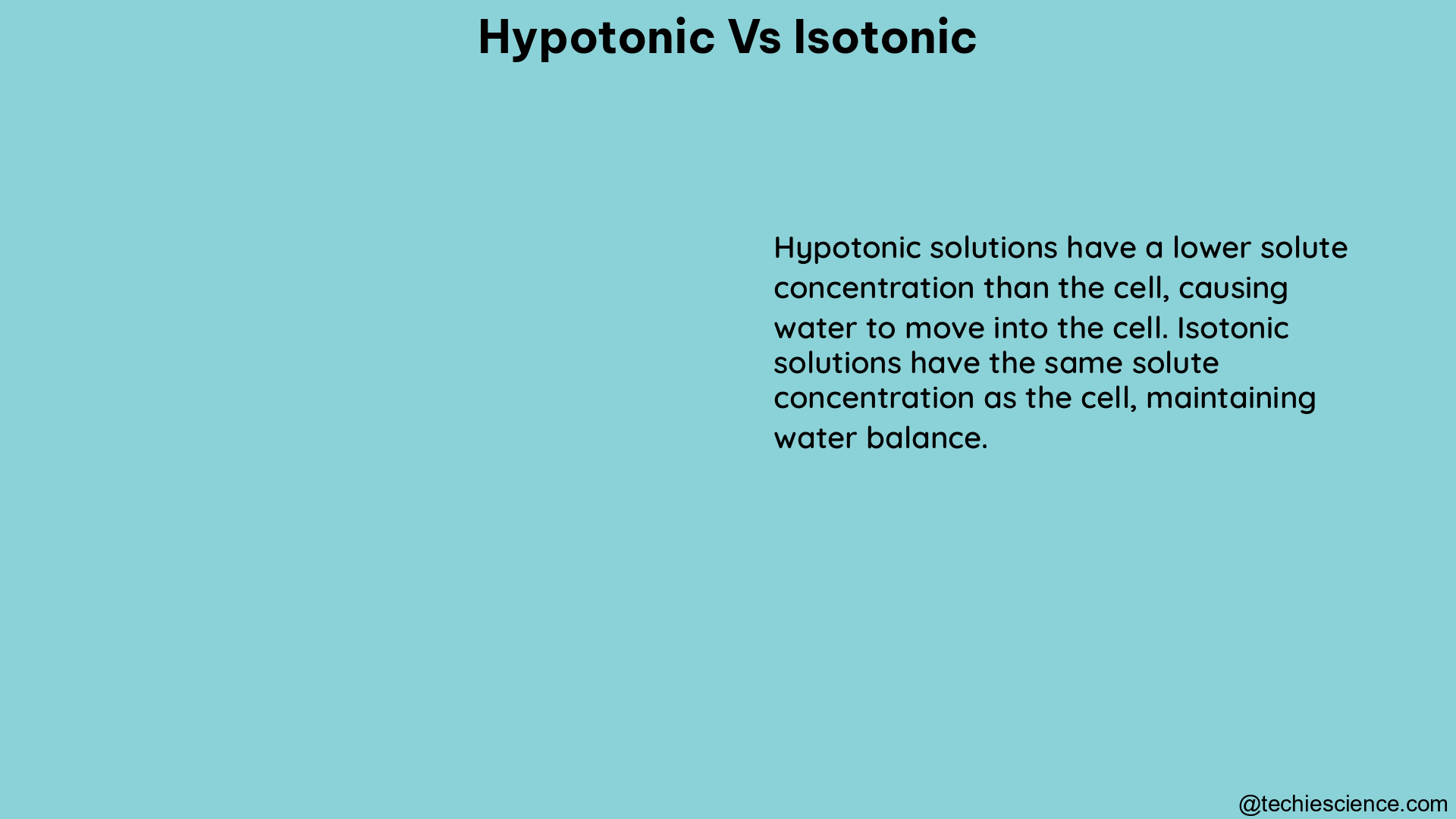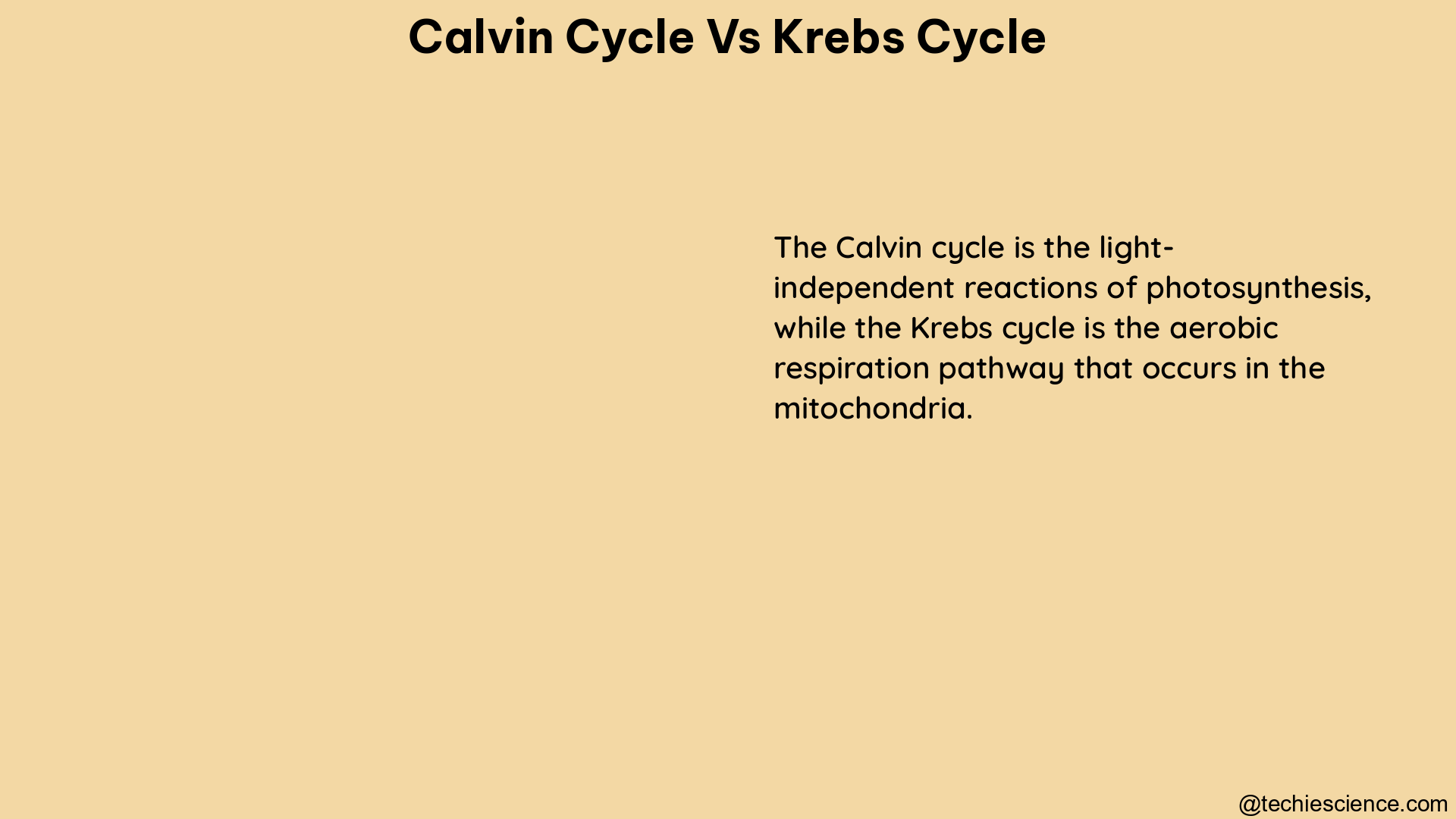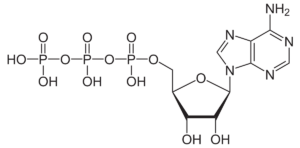The Krebs cycle and the electron transport chain are two interconnected processes that play a crucial role in cellular respiration, the metabolic pathway that converts the energy stored in glucose and other organic molecules into the universal energy currency, ATP. While the Krebs cycle occurs in the mitochondrial matrix, the electron transport chain is located in the inner mitochondrial membrane, and together they form the core of oxidative phosphorylation.
The Krebs Cycle: Unlocking the Energy Potential
The Krebs cycle, also known as the citric acid cycle or tricarboxylic acid (TCA) cycle, is a series of chemical reactions that generate energy through the oxidation of acetyl-CoA, a molecule derived from the breakdown of carbohydrates, fats, and proteins. This cyclic pathway is named after the British biochemist Sir Hans Krebs, who elucidated its mechanism in the 1930s.
Key Steps in the Krebs Cycle
-
Acetyl-CoA Entry: The cycle begins with the entry of acetyl-CoA, which is produced from the oxidative decarboxylation of pyruvate, the end product of glycolysis, or from the β-oxidation of fatty acids.
-
Citrate Synthesis: Acetyl-CoA combines with oxaloacetate to form citrate, the first intermediate of the cycle, in a reaction catalyzed by the enzyme citrate synthase.
-
Isomerization and Decarboxylation: Citrate is then converted to isocitrate, α-ketoglutarate, succinyl-CoA, succinate, fumarate, and finally, malate, through a series of enzymatic reactions involving isomerization, decarboxylation, and oxidation.
-
Energy Production: During these transformations, the cycle generates one ATP (or GTP) molecule, three NADH molecules, and one FADH2 molecule per turn. The NADH and FADH2 produced in the Krebs cycle are then used as electron donors in the electron transport chain.
Regulation and Efficiency of the Krebs Cycle
The Krebs cycle is tightly regulated to maintain a balance between energy production and the synthesis of intermediates for other metabolic pathways. Key regulatory mechanisms include:
- Allosteric regulation of enzymes by metabolites such as ATP, ADP, and NADH
- Covalent modification of enzymes through phosphorylation or acetylation
- Transcriptional control of enzyme-encoding genes
The efficiency of the Krebs cycle can be measured by the amount of ATP generated per turn of the cycle. On average, one turn of the Krebs cycle produces 2 ATP (or GTP), 3 NADH, and 1 FADH2, which can be further utilized in the electron transport chain to generate additional ATP molecules.
The Electron Transport Chain: Powering ATP Synthesis

The electron transport chain (ETC), also known as the respiratory chain, is a series of protein complexes located in the inner mitochondrial membrane. This chain of redox reactions is responsible for the final stage of cellular respiration, where the energy stored in the electrons of NADH and FADH2 (produced in the Krebs cycle and other metabolic pathways) is used to drive the synthesis of ATP.
Components of the Electron Transport Chain
The electron transport chain consists of the following key components:
- Complex I (NADH Dehydrogenase): Oxidizes NADH and transfers electrons to coenzyme Q (ubiquinone).
- Complex II (Succinate Dehydrogenase): Oxidizes FADH2 and transfers electrons to coenzyme Q.
- Complex III (Cytochrome bc1 Complex): Transfers electrons from coenzyme Q to cytochrome c.
- Complex IV (Cytochrome c Oxidase): Transfers electrons from cytochrome c to oxygen, the final electron acceptor, reducing it to water.
- Coenzyme Q (Ubiquinone): Shuttles electrons between Complexes I, II, and III.
- Cytochrome c: Transfers electrons between Complexes III and IV.
The Chemiosmotic Mechanism of ATP Synthesis
As the electrons flow through the electron transport chain, they release energy that is used to pump protons (H+ ions) from the mitochondrial matrix into the intermembrane space, creating a proton gradient. This proton gradient, or proton-motive force, is then used by the enzyme ATP synthase to drive the phosphorylation of ADP to ATP, a process known as chemiosmosis.
Efficiency of the Electron Transport Chain
The efficiency of the electron transport chain in generating ATP can be quantified by the P/O ratio, which represents the number of ATP molecules produced per oxygen atom consumed. The P/O ratio for the oxidation of NADH and FADH2 derived from the Krebs cycle and other metabolic pathways is approximately 2.5 and 1.5, respectively.
The overall sum of these partial P/O ratios gives the total ATP production by oxidative phosphorylation, which is estimated to be around 30-32 ATP molecules per glucose molecule.
Interconnection between the Krebs Cycle and Electron Transport Chain
The Krebs cycle and the electron transport chain are closely linked and work together to generate the majority of the cell’s ATP through the process of oxidative phosphorylation. The Krebs cycle produces the electron carriers NADH and FADH2, which are then oxidized in the electron transport chain, driving the proton gradient and the subsequent synthesis of ATP by ATP synthase.
The efficiency of this coupled system can be further enhanced by the presence of shuttle mechanisms, such as the malate-aspartate shuttle and the glycerol-3-phosphate shuttle, which help to transport the reducing equivalents (NADH and FADH2) generated in the cytosol to the mitochondria for use in the electron transport chain.
Conclusion
The Krebs cycle and the electron transport chain are two fundamental processes that work in tandem to generate the majority of the cell’s ATP through the process of oxidative phosphorylation. While the Krebs cycle is responsible for the oxidation of acetyl-CoA and the production of electron carriers, the electron transport chain utilizes these carriers to drive the synthesis of ATP. Understanding the intricate details and interconnections between these two pathways is crucial for a comprehensive understanding of cellular energy metabolism.
References:
- Biology Krebs Cycle and Electron Transport Chain Flashcards | Quizlet. Available at: https://quizlet.com/9936421/biology-krebs-cycle-and-electron-transport-chain-flashcards/
- Quantifying intracellular rates of glycolytic and oxidative ATP production in mammalian cells. Available at: https://www.ncbi.nlm.nih.gov/pmc/articles/PMC5409486/
- 12.4: The Citric Acid Cycle and Electron Transport. Available at: https://chem.libretexts.org/Courses/Saint_Marys_College_Notre_Dame_IN/CHEM_118_%28Under_Construction%29/CHEM_118_Textbook/12:_Metabolism_%28Biological_Energy%29/12.4:_The_Citric_Acid_Cycle_and_Electron_Transport
- AP® BIOLOGY 2015 SCORING GUIDELINES – Question 2. Available at: https://secure-media.collegeboard.org/digitalServices/pdf/ap/apcentral/ap15_biology_q2.pdf
- Glycolysis, Krebs Cycle & Electron Transport Chain – YouTube. Available at: https://www.youtube.com/watch?v=3Hxwzf7Alcw



